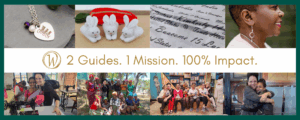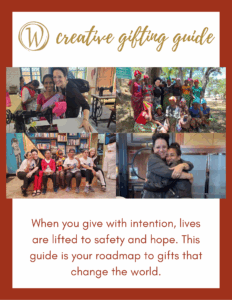January is Human Trafficking Prevention & Awareness Month.
As part of our January Campaign to bring awareness, Women At Risk, International (WAR, Int’l) here is the third blog article in the series.
How the Past Five Presidents Took Up the Fight Against Human Trafficking
Since 2010, the President of the United States has recognized the month of January as National Human Trafficking Prevention Month, dedicating time to raise awareness, educate the public, and celebrate those engaged in the fight against human trafficking at home and abroad. In the spirit of Human Trafficking Prevention Month 2025, Women at Risk, International, wants to highlight the decisive action the last five presidents have taken towards setting captives of modern slavery free.
President Joe Biden (2021 – Present)
In 2021, President Biden signed an updated National Action Plan to Combat Human Trafficking, espousing the Administration’s commitment to prosecute, protect, and prevent. Additionally, in 2021, the President signed the Countering Human Trafficking Act, which codified the expansion of the Department of Homeland Security’s Center for Countering Human Trafficking. Continuing the fight against forced labor in supply chains, President Biden approved the Uyghur Forced Labor Prevention Act. Finally, due to the reality that most victims of trafficking are women and girls, the Biden Administration reauthorized the Violence Against Women Act in 2022, expanding jurisdiction of tribal courts to prosecute non-Native American sex traffickers.
President Donald Trump (2017 – 2021)
During his time in office, President Trump asserted that human trafficking is an “urgent humanitarian issue” and that his administration is “committed to leveraging every resource we have to confront this threat, to support victims and survivors, and to hold traffickers accountable for their heinous crimes.” President Trump signed four key bills demonstrating the continued bipartisan commitment to end human trafficking: the Trafficking Victims Protection Reauthorization Act, the Abolish Human Trafficking Act, the Frederick Douglass Trafficking Victims Prevention and Protection Reauthorization Act, and the Trafficking Victims Protection Act. Together, these bills worked to tighten criteria for meeting trafficking elimination standards, appropriate necessary funding, and establish new justice and security initiatives. President Trump issued an executive order on Combating Human Trafficking and Online Child Exploitation in the United States in January 2020. This order outlined mandates to strengthen federal responses to human trafficking, prosecute perpetrators and individuals who exploit children online, and protect victims. President Trump, additionally, approved the largest Department of Justice grant package in history to combat human trafficking.
President Barack Obama (2009 – 2017)
President Barack Obama was responsible for establishing the National Human Trafficking Prevention Month in 2010. Every January, he renewed his Administration’s commitment to fighting human trafficking and called upon the American people to “recognize the vital role we can play in ending modern slavery and to observe this month with appropriate programs and activities.” President Obama reauthorized the Trafficking Victims Protection Act in 2013, focusing on the elimination of human trafficking from the supply chain of goods. In 2015, Congress passed, and Obama signed, the Trade Facilitation and Trade Enforcement Act, providing U.S. Customs and Border Protection broad authority to prevent the import of goods suspected to be made with forced labor. The Obama Administration convened the first U.S. Advisory Council on Human Trafficking in 2016, which appointed eleven human trafficking survivors to ensure that their voice was heard and present in ensuring that federal anti-trafficking initiatives were grounded in the experiences of those most deeply impacted.
President George W. Bush (2001 – 2009)
President George W. Bush made fighting human trafficking a cornerstone of his administration stating that, “No one is fit to be a master, and no one deserves to be a slave.” The President signed to amend and reauthorize the Trafficking Victims Protection Act in 2003, 2005, and 2008. This greatly refined and expanded existing legislation, providing for greater criminal provisions, extraterritorial jurisdiction over trafficking offenses, and improved methods to hold traffickers accountable. In 2003, President Bush championed the PROTECT (Prosecutorial Remedies and Other Tools to End the Exploitation of Children Today) Act which increased penalties for federal crimes against children and provided law enforcement with more tools to prevent, investigate, and prosecute child abuse, trafficking, and violent crimes. President George W. Bush placed special emphasis on combating trafficking abroad, too. In 2008, he spearheaded a $50 Million Initiative to Combat Trafficking in Persons, empowering international projects to support rescue, vocational training, and law enforcement task forces in countries such as Brazil, Cambodia, and Tanzania, among many others.
President Bill Clinton (1993 – 2001)
On October 28, 2000, Congress passed the Trafficking Victims Protection Act (TVPA), and President Clinton subsequently signed it into law. This marked the first federal law to combat trafficking in persons. It dramatically expanded the fight against human trafficking, establishing both the President’s Interagency Task Force to Monitor and Combat Trafficking and the Office to Monitor and Combat Trafficking within the Department of State. These two entities spearhead domestic and global efforts to prosecute traffickers, protect victims, and prevent the continuation of trafficking. Clinton initially outlined this three-fold strategy in a 1998 executive directive, cementing the United States’ bedrock approach to the issue. Earlier, in 1994, Clinton signed the Violence Against Women Act, which established federal criminal provisions and grant programs to improve the criminal justice system’s approach to domestic violence, sexual assault, and stalking. Not only did this heighten protection for women but it mitigated the perpetration of acts that perpetuate human trafficking.
In the spirit of Human Trafficking Prevention Month:
~Learn more about the history behind the Month here.
~Explore the Office to Monitor and Combat Trafficking in Persons here.
~Consider writing a letter to your Representative to request their continued support towards ending modern slavery TODAY.




